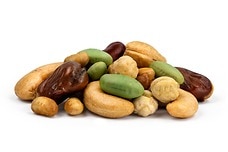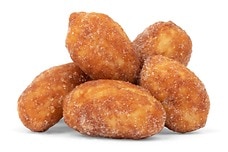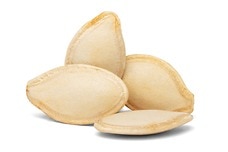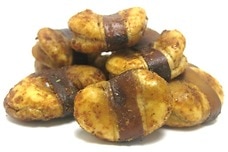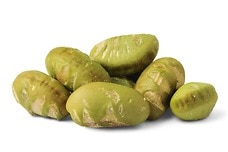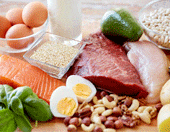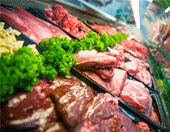High-Protein Snacks
We all know that protein is a necessary ingredient in a healthy diet. But there are different types of protein, and not all of them are equal. When you're eating for optimum health and trying to maintain control over your total calorie intake, it's good to be aware of the additional benefits that some protein-rich foods supply.
Before determining what snacks make the best offerings for a protein-rich diet, it's important to understand the role of proteins in the body to include high-protein snacks as part of a balanced diet. If you've ever tried making changes to your diet then you probably know the effects of tunnel vision.
It's easy for changes to your diet to backfire when you're only focusing on one aspect of your diet, whether that's counting calories or counting grams of protein consumed in a day. A strict diet of beef jerky, for example, may offer plenty of protein but it will leave you feeling pretty lousy without the vitamins, minerals, fiber, and energy of fruits and vegetables.
Luckily, we've put together a simple outline of the consdierations you need when upping your protein intake, including eating diverse sources of protein, ensuring that your protein sources offer a hearty source of vitamins and minerals, and getting between 10 and 35% of your daily calories from protein.
What Does Protein Do for the Body?
Protein can be stored in the body, where it is utilized mostly by the muscles. It is necessary for growth, energy and maintenance. In fact, proteins are basic building blocks for your body’s cells, and a protein-deficient diet can eventually lead to the breakdown of bodily systems and functions.
Enzymes and regulatory substances like insulin are also proteins, and geneticists have identified several other types, including: structural proteins, hormonal proteins, immunoproteins and transport proteins. To construct these different types of proteins, the body needs to have the right building blocks available.
Proteins are made up of chains of compounds called amino acids. There are twenty types of amino acids that your body uses to construct the proteins it needs, and it is capable of creating all but nine amino acids on its own. These last nine amino acids must be obtained through the diet, and are therefore known as essential amino acids.
The essential amino acids include:
- Histidine
- Isoleucine
- Leucine
- Lysine
- Methionine
- Phenylalanine
- Threonine
- Tryptophan
- Valine
How Can I Ensure I am Getting All of the Amino Acids My Body Needs?
Foods that contain adequate amounts of each of the nine essential amino acid are known as complete proteins. Most complete proteins are animal proteins like beef, eggs, and dairy; but, there are options for vegetarians and vegans as well, including: soybeans, algae, hemp seeds, buckwheat, and quinoa.
While most meat-eating diets will include plenty of complete proteins, vegans and vegetarians need to be cognizant of the composition of the proteins they consume.
Combining two incomplete proteins such as beans and rice can offer a sufficient source of all nine of the amino acids your body needs. For the most part, when relying on incomplete proteins, simply enjoying a wide variety of protein sources should be sufficient to ensure your diet includes all of the essential amino acids.
How Much Protein Do I Need to Stay Healthy?
According to the National Institute of Medicine, protein should supply a healthy dose of calories, between 10 and 35 percent of your daily intake. Each gram of protein supplies about four calories; for the average woman that translates to 46 grams of protein a day, with 56 grams for the average male. Most protein is transformed into glucose; but, it takes the body three to four hours to process protein, and foods that are high in protein aren't likely to cause an increase in blood sugar levels.
The actual protein content of your food will vary based on many factors, but the following generally offer ample sources of the nutrient:
- Beef
- Chicken and other Poultry
- Seafood
- Eggs
- Milk, Cheese and Yogurt
- Peas and Beans
- Nuts
- Seeds
- Soy
What Else Should I Consider When Seeking Protein from a Snack?
Low-fat, protein-rich foods make great snacks. By planning your snacks, you can also balance your energy requirements throughout the day to avoid those familiar "sinking spells," by consuming other beneficial nutrients. A handful of nuts, especially almonds or walnuts, provides a healthy serving of protein and may also reduce the risk of heart disease. Nuts tend to be high in calories, though, so you should be sure to not overindulge.
Peanut butter, cream cheese or hummus spread on crackers or used as a vegetable dip can make great protein-packed snacks. Mix up a fruit smoothie with fresh berries, yogurt and a bit of honey to add antioxidants as well as calcium and vitamin D to your protein source. Eggs supply vitamin D as well, and they support ocular health and memory. Seafood is rich in many nutrients, including omega-3 fatty acids, and is extremely low in calories.
Seeds are a source of magnesium, which is necessary for bone health, are high in fiber, and protect against type 2 diabetes. Protein-rich beef is one of the best sources of iron; poultry supplies zinc, selenium and niacin, all of which are vital for our wellbeing.
Final Quick Tips to Enjoy the Benefits of High-Protein Snacks
While any healthy diet plan is essentially a balancing act, pay attention to the protein you consume, get the proper amount of sleep and exercise, and learn how to choose sensible snacks to keep your energy levels high and your calorie intake in check. You have only your good health to gain from the effort.
Protein-Packed Snack Recipes
Create your own protein sources with these easy to follow recipes, each of which are low in calories and saturated fat to support overall health and a well-balanced diet.
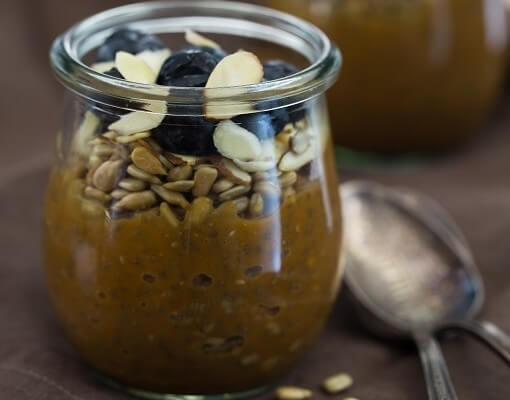
Pumpkin Chia Seed Pudding Recipe
Start the day off with a preponderance of protein; this a palatable pudding packed with seeds, dairy and nuts to offer a healthy helping of protein in a low calorie breakfast you’ll love.
Ingredients: Milk, pumpkin puree, chia seeds, maple syrup, pumpkin spice, sunflower seeds, sliced almonds, fresh blueberries.
Total Time: 10 minutes
| Yield: 4 servings
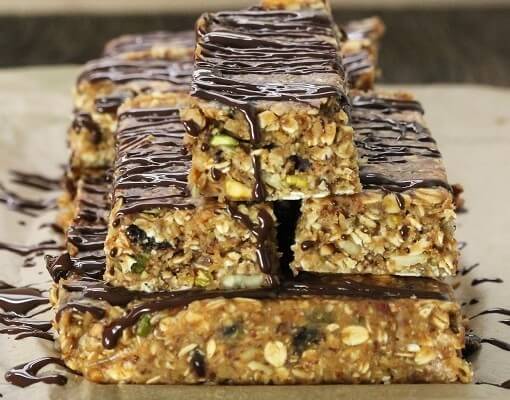
No-Bake Granola Bars Recipe {gluten-free, vegan}
These delectable snacks are both gluten-free and vegan to offer a protein-packed snack anyone can enjoy. Each serving offers an incredible 13.9 grams of protein!
Ingredients: Gluten-free rolled oats, peanut butter, dried tart cherries, pistachios, flaxseed meal, walnuts, pumpkin seeds, sunflower seeds, agave syrup. unsweetened applesauce, melted cacao nibs or dark chocolate.
Total Time: 15 minutes
| Yield: 8 - 10 servings
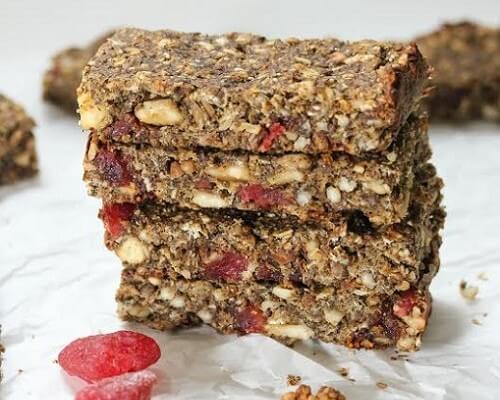
Homemade Granola Bars Recipe {gluten-free}
Variety is the spice of life, so supplicate your intake of our no-bake granola with this lower calorie, low-fat option that offers a more modest portion of protein with 8 grams per serving.
Ingredients: Dried mulberries, dried strawberries, raw cashews, organic peanut butter, ripe bananas, raw sunflower seeds, hemp protein powder, gluten-free rolled oats, chia seeds, flaxseed meal.
Total Time: 40 minutes
| Yield: 12 bars
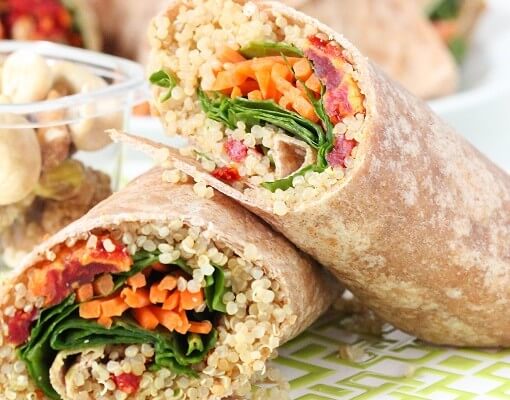
Quinoa Veggie Wrap Recipe {vegan}
Yet another vegan snack, these delectable wraps offer an abundant 13 grams of protein per 332-calorie serving. The wraps also offer 11 grams of fiber and abundant supplies of both iron and vitamin A!
Ingredients: Tortilla wraps, quinoa, hummus, fresh spinach, sun-tomatoes, shredded carrots.
Total Time: 30 minutes
| Yield: 4 wraps
Try some High-Protein Snacks!
Healthy Eating
- Healthy Highlights
- 5 Uses for Cacao Powder
- 5 Ways to Eat Farro
- 6 Best Gluten-Free Foods
- Alcohol and the Body
- Almond Flour Recipes
- Anti-Aging Superfoods
- Beat the Afternoon Slump
- Benefits of a Plant-Based Diet
- Benefits of Baobab
- Benefits of Cashews
- Benefits of Coconut Oil for Hair
- Benefits of Coconuts
- Benefits of Dates
- Benefits of Fenugreek
- Benefits of Garcinia Cambogia
- Benefits of Goji Berries
- Benefits of Kale Chips
- Benefits of Monk Fruit Sweetener
- Benefits of Peanuts
- Benefits of Pecans
- Benefits of Pistachios
- Benefits of Pumpkin Seeds
- Benefits of Spelt Flour
- Benefits of Steel Cut Oats
- Benefits of Sunflower Seeds
- Benefits of Tiger Nuts
- Benefits of Turmeric
- Benefits of Walnuts
- Benefits of Wheatgrass
- Best Food Fads
- Cacao vs Cocoa
- Caffeine-Free Energy Foods
- Chocolate That's Good for You
- Diet vs. Exercise
- Fat Burning Foods
- Food Myths Debunked
- Foods for Bone Density
- Foods for Colon Health
- Foods for Healthy Hair
- Foods for Healthy Skin
- Foods to Help Sleep
- Foods to Reduce Stress
- Green Tea Benefits
- Healthy Baking Flours
- Heart Healthy Habits
- High Protein Health Risks
- How to Boost Your Metabolism
- How to Lose Weight While Aging
- How to Throw a Vegan BBQ
- Kaniwa vs Quinoa
- Little Health Foods
- Low-Carb: Fad or Friend?
- Making Healthier Desserts
- Mediterranean Diet Meal Plan
- Natural Beauty Products
- Nuts for Weight Loss
- Preparing Vegan Meals
- Preventing Muscle Degeneration
- Rare Superfoods
- Reduce Sugar Intake
- Save Time By Going Vegan
- Smarter Snack Swaps
- Smoothie Ingredients
- Soy Protein vs Whey Protein
- Starting a Plant-Based Diet
- Steel Cut vs Rolled Oats
- Sugar Substitutes
- Vegan Proteins
- Vegan Substitutions for Fall Recipes
- Why Go Vegan
- Healthy Meals
- Healthy Recipes
- Sports Nutrition
- Nutrition and Special Diets
- 21 Day Fix
- 5 Popular Diet Similarities
- Alkaline Diet
- Anti-Inflammatory Diet
- Calorie Counting
- Carb Cycling Diet
- Celiac Disease
- Cholesterol
- Clean Eating
- Crohn's Disease
- DASH Diet
- Detox Diet
- Diabetes
- Diabetes Diet
- Diet Pill Dangers
- Fat Burning Foods
- Gluten-free Diet
- Glycemic Index
- Heart Health
- High Blood Pressure Diet
- High Fiber Foods
- How to Eat Healthy
- How to Lower Blood Pressure
- Hypertension
- IBS Diet
- Ketogenic Diet
- Liquid Diet
- Low GI Foods
- Low-Carb Diet and Foods
- Low-Fat High-Carb Diet
- Mediterranean Diet
- Mediterranean Diet Foods
- Military Diet
- Nutrition Labels Explained
- Paleo Diet
- Raw Food Diet
- Superfoods
- Sustainable Weight Loss
- Thrive Diet
- Vegan Diet
- Vegetarian Diet
- Weight Loss Shakes
- Whole30
- Vitamins, Minerals & Nutrients

